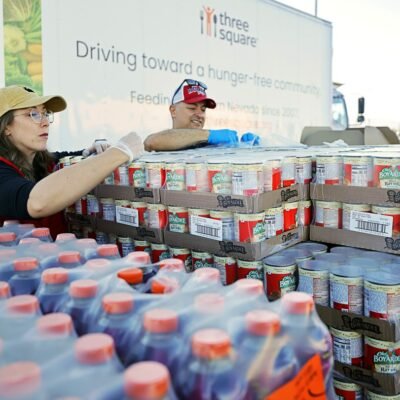As revolving credit card debt and high financing costs persist, experts are raising doubts about whether credit can keep bridging the gap between growing, but not momentous, income growth and aspirational spending.
Households are pulling out all the stops to keep spending, and a heavy reliance on credit card debt is one of the ways they’re doing it, according to Shannon Seery Grein, an economist for Wells Fargo and co-author on a recent report, Like There’s No Tomorrow: Unpacking Consumer Credit.
“Credit card debt has grown three times as fast over just the past four years as it did during the almost 12-year stretch in the prior credit cycle,” Seery Grein said in an email to Vegas Inc. “In the context of rising incomes, this elevated debt burden still looks manageable, but when considering consumer credit card rates north of 20%, servicing this debt is growing more challenging.”
She pointed to evidence like an uptick in credit card delinquency rates, as well as an uptick in personal interest expense, which has reached levels not seen since prior to the 2008 financial crisis.
“While we’re not yet worried of a full-blown credit crunch in the household sector, the recent run-up in credit card borrowing doesn’t look sustainable,” Seery Grein said.
Prior to the pandemic, consumer spending was relatively proportionate to disposable income growth. Per the Wells Fargo report, “more income meant more spending.” Income soared at the start of the pandemic because of fiscal stimulus programs, but inflation eventually began to outpace income growth.
Spending has nevertheless “roared ahead,” the report says, in part due to easy access to reasonably cheap credit.
Though consumer debt and revolving credit has undeniably increased, UNLV professor and Chair of the Lee Business School’s department of finance, Daniel Chi, said he’s not particularly alarmed.
“I think it’s very important that we not only look at the level of debt, but the level of debt relative to what?” he said, citing a strong labor market among other positive indicators.
He used a trip to the grocery store as an example. Where a normal trip for groceries may have cost $80 at one point, that same trip could now cost $150, he said. The increase in cost doesn’t necessarily mean the economy is “worse off,” he said. Debt will naturally increase alongside growth of income and the economy overall.
“It’s not as dire as one may expect,” he said.
Chi recommended that people manage their savings, budgeting and investing well, to prepare for their future. He also advised against carrying any credit card debt, if possible, and using savings to build up “financial resilience.”
“We are resilient,” he said. “Meaning if we fall, we can come back up.”
Though he believes it’s good to be aware of the circumstances of the economy, and to take responsibility for one’s own finances, he reiterated that the run-up in revolving credit card debt does not have to be alarming.
“Households have begun to grow a bit more choosy with their purchasing patterns and we’re seeing some signs of a prioritization of non-discretionary items,” Seery Grein said in an email. “We expect credit card borrowing and broader consumer spending to slow in the second half of this year amid a moderation in the labor market.”
Click HERE to subscribe for free to Vegas Inc’s BizClick newsletter. Stay up to date with the latest business news in Las Vegas sent directly to your inbox each Monday.





